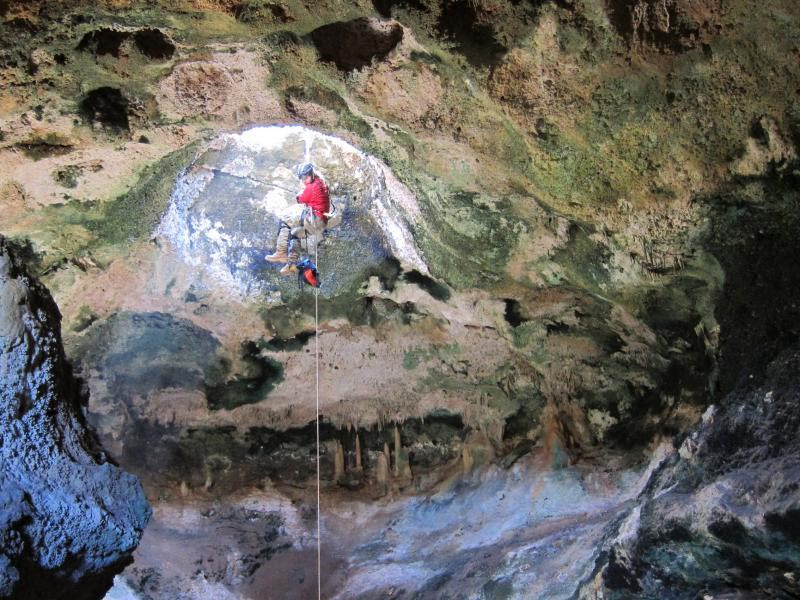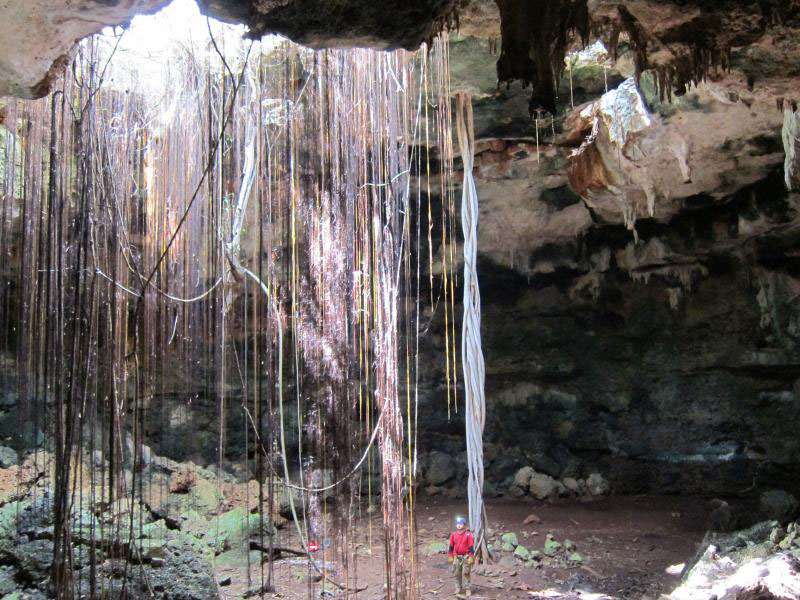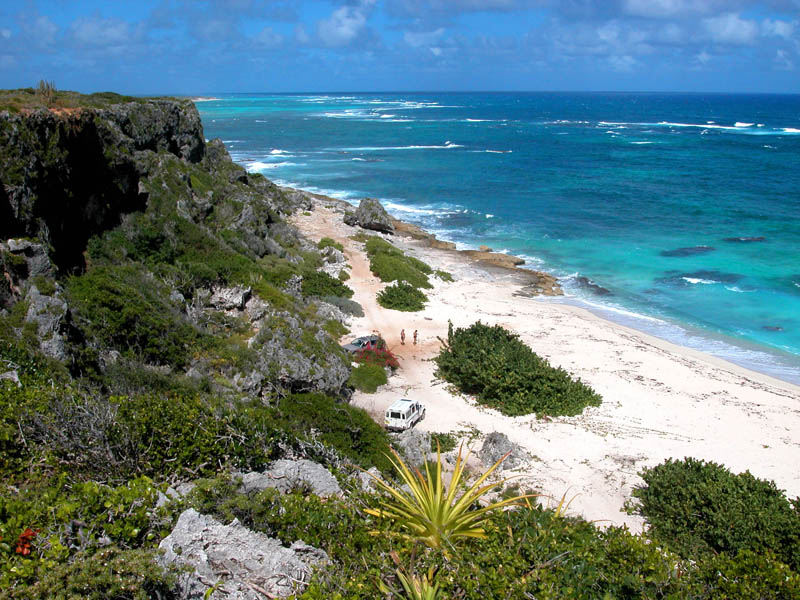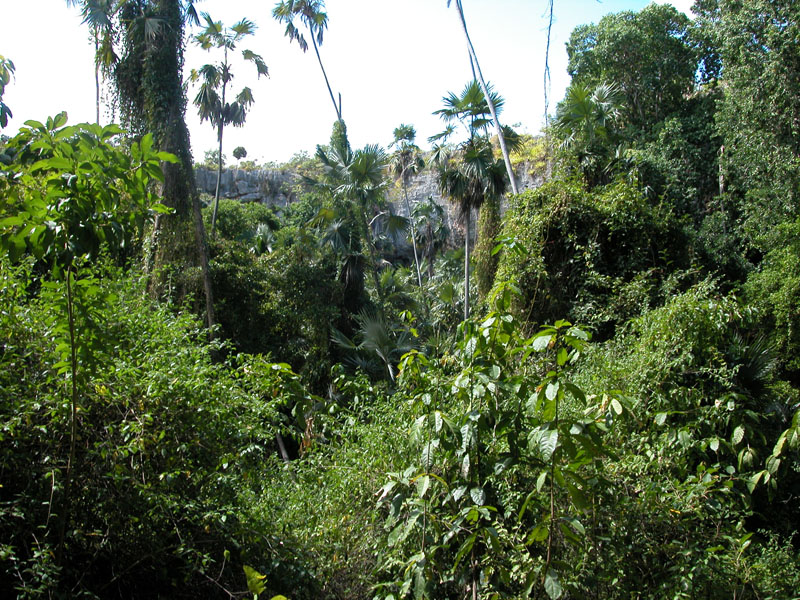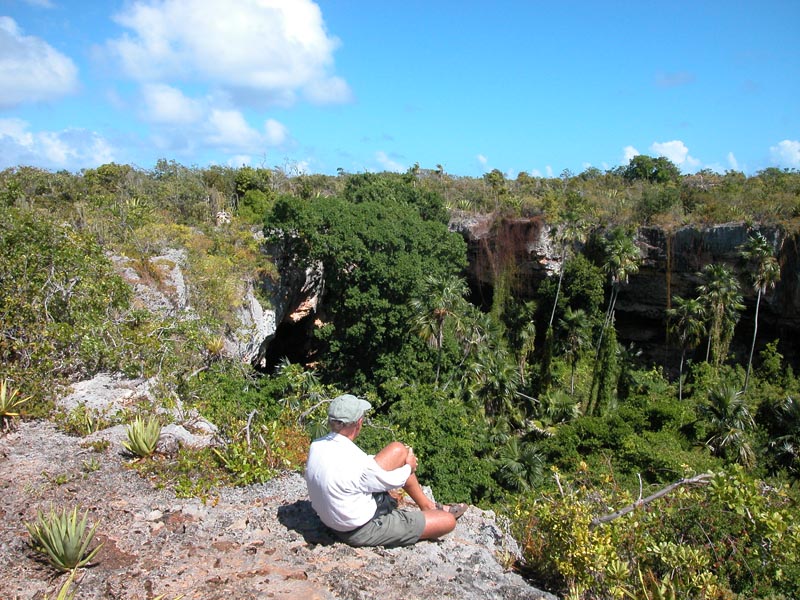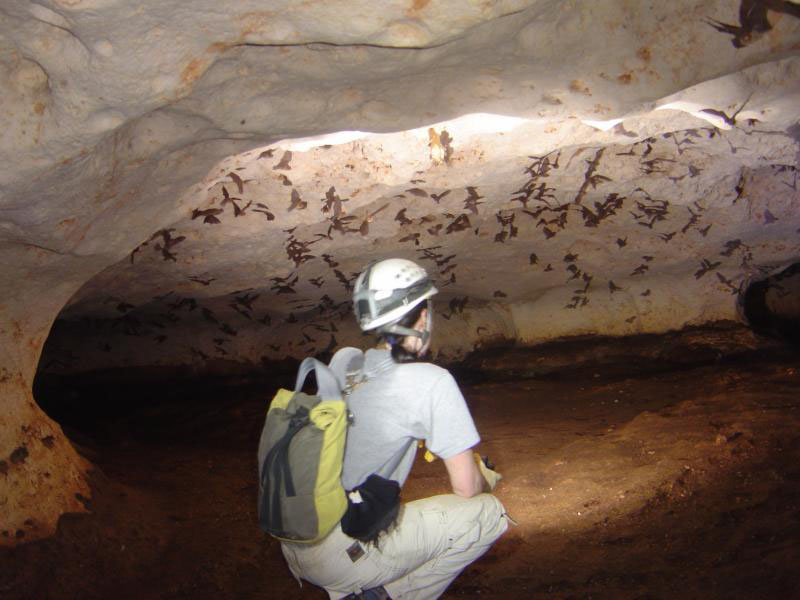our amazing caves
As an island composed of limestone, Barbuda has many caves and sink holes to explore. There are various sites that are easily accessible to visitors and the closest to the village is at Two Foot Bay; most of the day tours will take you here. However a local guide is helpful and essential when visiting some of the harder to reach caves as they will require local knowledge and some experience of caving.
Two Foot Bay
The caves here (pictured above) run along the sea cliffs and are interesting and full of history. A visitor might see evidence of bats, crabs, huge iguanas, tropicbirds and other interesting flaura and fauna. Barbudans have given them names, such as ‘The Fridge’, which as its name suggests is cool and breezy. Inside Indian Cave it is possible to see drawings (petroglyphs) left by the original inhabitants of Barbuda, the Arawak or the Siboney. Visit our history pages to learn more about these people.

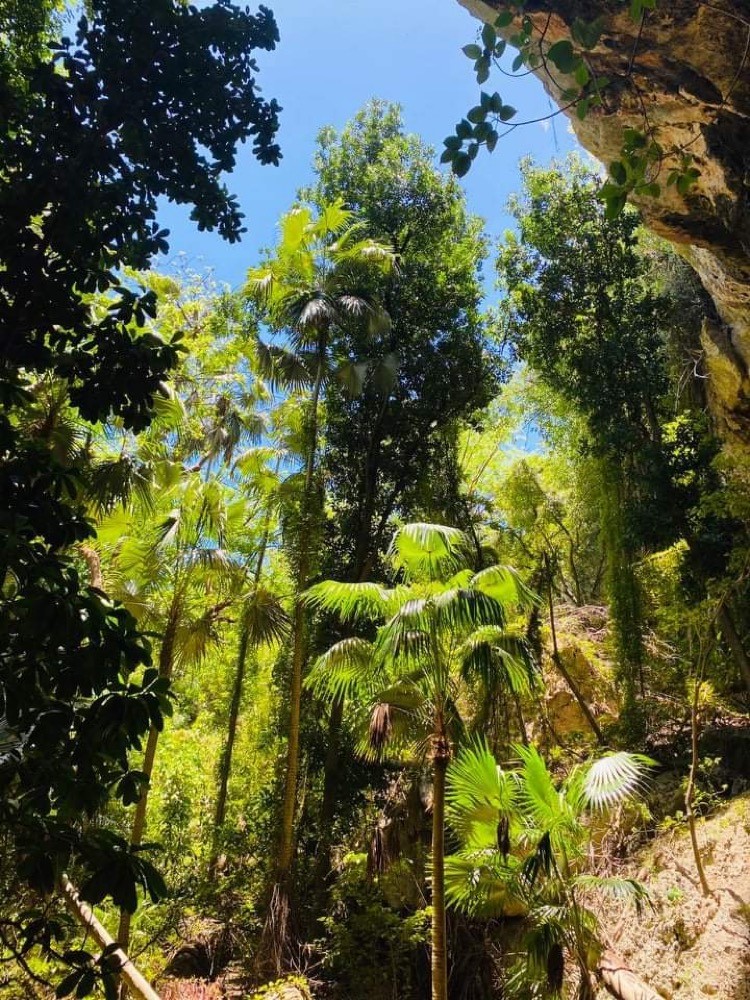
Darby Cave
Three and half miles north-east of Codrington is Darby Cave – a spectacular sink hole in the middle of the Highlands. It is well worth the long walk (45 minutes) to see the huge deep hole suddenly appear in front of you and wonder how it got there; the tops of tall palm trees are suddenly at eye level! Darby Sink Hole is over three hundred feet in diameter and around seventy feet deep. One side of the hole has been greatly undercut and stalactites up to eight feet long have formed under the overhang. The vegetation resembles a mini rainforest with palms, ferns, and lianas. On recent visits we startled two deer and found land turtles on the way. Local people know this area well and can show you the route which starts at Highland, from Codrington House..
Dark Cave
Dark Cave is two miles to the south of Darby Cave. The cave has a narrow entrance leading to a vast cavern containing pools of water, which were probably a water source for Amerindian inhabitants as artefacts have been found nearby. Dark Cave is the habitat for a rare species of amphipod, the blind shrimp, as well as several species of bats.
What we find when we go to the caves…
Barbudans use their magnificent caves to this day for camping, holiday events and other regular activities such as daily hunting and fishing. Sophia Perdikaris’ report below states ‘Barbudans have been able to maintain a relationship to their environment that is unparalleled.The ‘living off the land’ activities as seen at the caves are an excellent example of this’.
Studies of Barbuda’s caves and sink holes have been carried out over the years, including the discovery in 1998 of an extinct Great White Shark’s tooth at Darby Cave. You can read the studies here.

